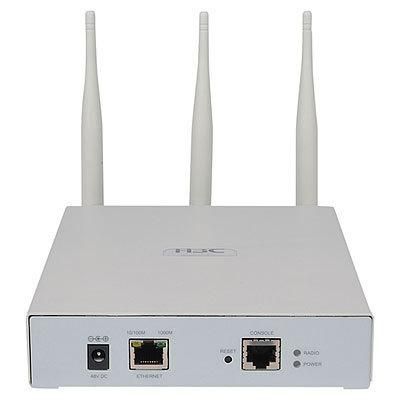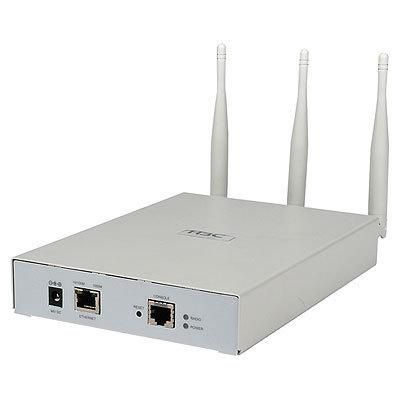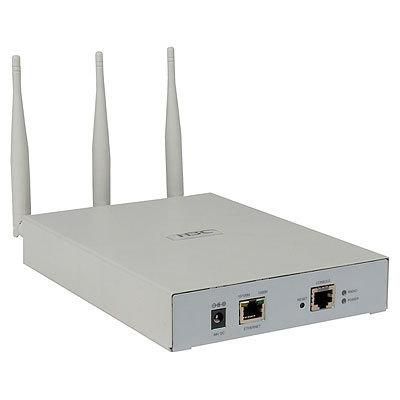- Home
- Mreža
- Bežična mreža
- Bežične pristupne točke
- HP A-WA2610 Single Radio 802.1 – JD452A-RFB
HP A-WA2610 Single Radio 802.1
Ovaj je dio korišten ili obnovljen. Sva dodatna oprema možda NIJE uključena.
MPN JD452A-RFB
EAN/UPC 5712505906798
Stanje zaliha
In enterprise headquarters, branch offices, or campus networks, the HP 802.11n Access Point Series is an outstanding choice for secure, reliable radio-based connections. These WLAN access points extend mobile access to wired networks, broadening system capacity and providing seamless integration between wired and wireless networks. The single-radio dual-band HP WA2612 and WA2610E Access Points use the 2.4 or 5 GHz band; the dual-radio dual-band WA2620E and WA2620 access points operate simultaneo...
Pročitajte cijeli opisKompatibilno sa
HP/HPE
Networking
Specifikacije za JD452A-RFB
Design
Certification
UL 2043, UL 60950-1, EN 60950-1, IEC 60950-1:2001 CAN/CSA-C22.2 No. 60950-1, ANSI C63.4, FCC Part 15, RoHS
Features
2.4 GHz
Yes
5 GHz
Yes
Cabling technology
10/100/1000Base-T(X)
Ethernet LAN data rates
10, 100, 1000
Frequency band
2.4 - 5 GHz
Maximum data transfer rate
54 Mbit/s
Networking standards
IEEE 802.11n, IEEE 802.3, IEEE 802.3ab, IEEE 802.3af, IEEE 802.3u
Operational conditions
Operating relative humidity (H-H)
5 - 95 %
Operating temperature (T-T)
-10 - 65 °C
Package dimensions
Gross Weight
11,94 kg
Power
Power consumption (typical)
13 Watt
Power over Ethernet (PoE)
Yes
Product dimensions
Net Weight
11,84 kg
Vendor information
Brand Name
Warranty
1 Godina
Weight & dimensions
Dimensions (WxDxH)
210 x 150 x 35 mm
Opis
In enterprise headquarters, branch offices, or campus networks, the HP 802.11n Access Point Series is an outstanding choice for secure, reliable radio-based connections. These WLAN access points extend mobile access to wired networks, broadening system capacity and providing seamless integration between wired and wireless networks. The single-radio dual-band HP WA2612 and WA2610E Access Points use the 2.4 or 5 GHz band; the dual-radio dual-band WA2620E and WA2620 access points operate simultaneously on both bands. All of the APs support IEEE 802.11a/b/g/n, and offer data rates up to 300 Mbps when using the 802.11n standard.
- Centralized access point management: if the WA2600 series access point is used with an AC, most of management and data frames are processed by the AC; the AC controls all Fit APs by using the AP-AC tunnel protocol so that the status of all devices can be clearly known; compared to a traditional Fat AP, a Fit AP and an AC greatly help system administrators manage the whole network. Automatic access point version upgrades: The WA2600 access points can automatically communicate with the AC in a network, as well as download the latest software versions to the access point; such operations do not require manual intervention, and therefore reduce network maintenance; this feature is especially important to large-sized networks.
- Auto Channel Select (ACS): helps reduce radio co-channel interference by automatically selecting an unoccupied radio channel. IEEE 802.11h International Telecommunication Union (ITU) compliant: employs Dynamic Frequency Selection (DFS) to automatically select another channel and adjust transmit power to reduce interference with systems such as radar, if detected on that same channel.
- High throughput: the WA2600 wireless APs are compatible with latest IEEE 802.11n standard; the single-radio APs support wireless access rates as much as 300 Mbps, which is six times more than that of the traditional IEEE 802.11a/b/g products. Dual stack: IPv4 and IPv6 support future-proofs the wireless network against obsolescence. Gigabit Ethernet interface: provides a connection to the network that eliminates the network as a bottleneck. QoS and Multimedia: IEEE 802.11e Wi-Fi Multimedia (WMM) wireless QoS standard—when combined with wired QoS policies—provides end-to-end QoS, delivering different wireless channel competitiveness for different services. Local forwarding: provides efficient data transmission and prevents the controller from being a performance bottleneck.
- Secure user isolation: virtual AP services enable the network administrator to provide specific services for different user groups, improving bandwidth and system resources, and simplifying network maintenance and management. Secure access by location: location AP-based user access control helps ensure that wireless users can access and authenticate only to preselected APs, enabling system administrators to control the locations where a wireless user can access the network. Endpoint Admission Defense: integrated wired and wireless Endpoint Admission Defense (EAD) helps ensure that only wireless clients who comply with mandated enterprise security policies can access the network, reducing threat levels by infected wireless clients and improving the overall security of the wireless network. WPA2: the latest, toughest standards-based security—with Wi-Fi Protected Access 2 (WPA2), Advanced Encryption Standard (AES) encryption, Temporal Key Integrity Protocol (TKIP), and Wired Equivalency Protocol (WEP) for legacy clients—protects the network from unauthorized user access.
- Ease of deployment: management via the wireless controller eliminates the need to manage each AP individually. Aesthetics: WA2612 and WA2620 access points designed with embedded antennas expand installation options and improve aesthetics. Optional antenna connectors: provide optional external antenna connections for installations that require further distances or more ideal antenna placement. Power over Ethernet: power via standards-based PoE source eliminates the need to run costly power outlets at the access point; the exception is the WA2620E access point, which requires a PoE+ power supply.
- Radio technology: IEEE 802.11a/n and 802.11g/n standards enable high-speed access from IEEE 802.11a/b/g/n clients at data rates up to 300 Mbps and cover a wide coverage area. Radio flexibility: single and dual radio access points allow customers to deploy what fits their needs. Interoperability: Wi-Fi Alliance certification prevents multivendor interoperability problems. Backwards compatibility: supports high speeds while protecting existing investments. Multiple-Input Multiple-Output (MIMO): advanced Multiple Input Multiple Output (MIMO) technology provides enhanced wireless range and coverage area for improved roaming and performance.
*Gore navedene podatke o proizvodu pruža Icecat. EET se ne može smatrati odgovornim za pogreške u vezi s tim.






